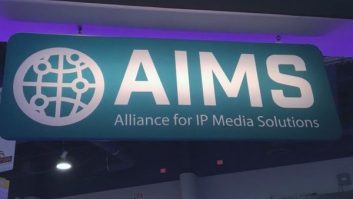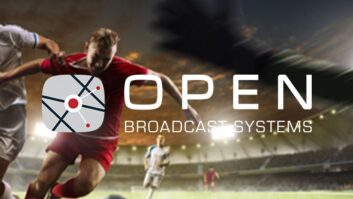
IP technologies rapid integration into production practices has come as a surprise to some. Within a very short space of time, a number of broadcasters and production companies have embraced the technology and are reaping the benefits of reduced travel costs and more efficient use of facilities.
Almost a year ago – on 22 November 2015 to be precise – Carlo’s TV Café was the first live multi-camera broadcast ever to be televised using cloud technology. Produced by RTL4, the Dutch commercial TV channel, the programme utilised Cloud Production, a comprehensive IP-based video production platform launched by NEP The Netherlands.
“The Cloud Production platform centralises resources so that they can be shared more efficiently, sustainably and across multiple productions and locations every day,” explains Peter Bruggink, CTO, NEP The Netherlands. “This enables the production crew to focus on the quality of the programmes. In addition, this centralised approach means significantly fewer crew members are needed on location.”
He continues, “We chose the name Cloud Production because it aptly describes what we are doing – with the technology housed in a data centre. The components will be assigned to various programmes for the day. For example, in the morning, a mixer, four camera base stations and an audio console can be used for a taping from a remote location, while the same equipment can be used later in other combinations in, for example, a studio.”
Tools for the job
At the heart of this Cloud Production platform are LDX 86 WorldCam cameras that use the IP solution from Grass Valley. NEP also selected the Grass Valley XF Universe Fiber adapter, XCU HD/4K XF IP base stations and a range of accessories. These cameras are divided over several studios across the Netherlands, connected over a high-capacity IP network to the XCUs that remain as a sharable asset in the NEP central data centre in Hilversum.
“These connections use NEP’s unique fibre-optic network to reach our own data centres, where all technical facilities are securely housed,” states Bruggink. “We are in a unique positon because NEP The Netherlands owns its own fibre network – something that mobile companies in other countries don’t usually allow. In addition, the distances involved are relatively short, which makes the use of uncompressed video possible.”
Options for working
He continues, “The production process can be fully ‘directed’ from the new Cloud Production suites – and always in HD or 4K. Depending on the type of production, the director has the option of working from one of our new central directing, audio and shading galleries, or from on-site at the studio or outside location. You need only deploy the resources and crew that are strictly necessary – and for the duration of the recording only. All of this contributes to a more sustainable environment in which large trucks and crew vans are no longer needed.”
To complete the production workflow, NEP worked with other vendors such as Lawo for their IP-based video and audio equipment. The set up comprises numerous V_remote4 IP video production units as well as Lawo mc2 56 audio mixing consoles, Nova compact routers, DALLIS I/O systems and A_mic8 analogue-to-IP audio interfaces. In addition, SAM’s SDI to IP transition solution was implemented. This includes Sirius 800 routers, Kahuna switchers and IQ Modular infrastructure. To achieve initial hybrid operation, NEP makes use of IQMIX IP/SDI conversion modules, using DS Link cables to reduce the cabling between the SDI systems and IP switch by a factor of eight. Juniper Networks provides the high-capacity network while VSM is used for controlling the complete Cloud Production infrastructure. All equipment is centrally hosted in the NEP data centre.
NEP The Netherlands CIO, Ralf van Vegten, adds, “Our most important lesson is that the changes in terms of organisation, support, operational preparation and customer care are crucial. Technology is only one component. The next step is to expand the galleries and connect more remote locations.”
Nico Roest, COO of the company, offers another perspective. “The necessary steps to switch to an IP environment actually take place several years before the change. You have to train people to work with network and IT, because there are only applications left to manage. Maintenance is taken care of with a laptop instead of toolbox. The integration of AV and IT knowledge is crucial for a good start and continuity in the future.”
He says that once those goals are achieved, working in this environment is ‘a real blast’. “Workstations are flexible, the content is available where and when needed – not only for linear TV, but for other platforms as well. IP involves high data flows. It is important that the entire organisation understands this and knows what to look out for, in order to work undisturbed. Therefore, procedures and work ethics should be adjusted on a high level.”







